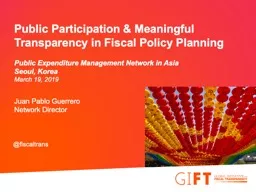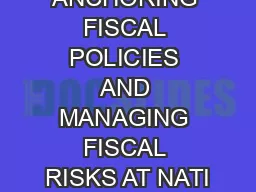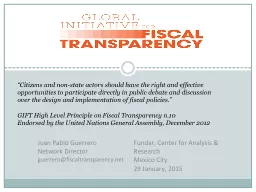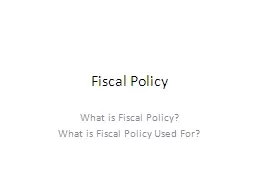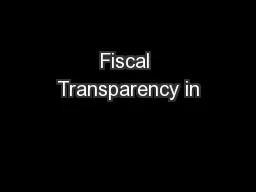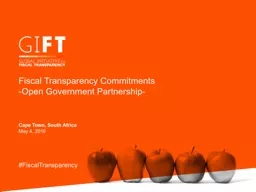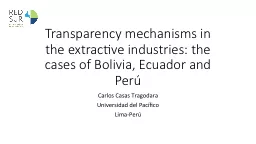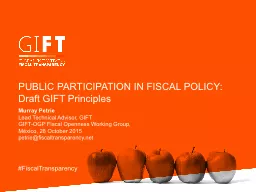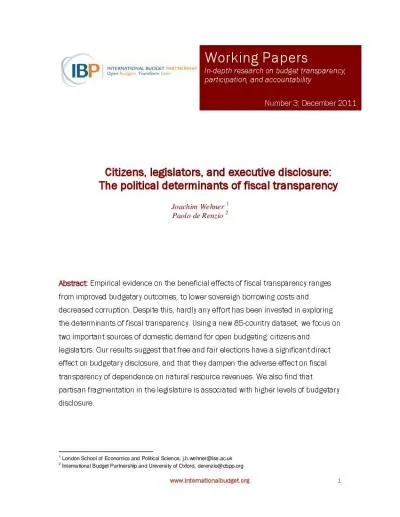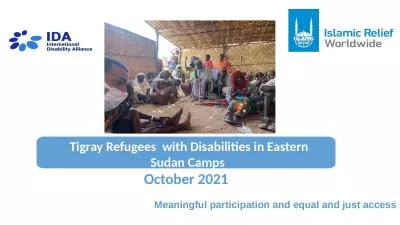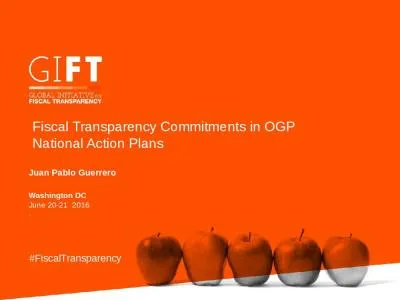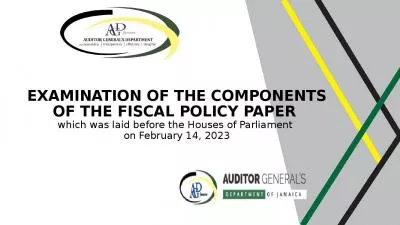PPT-@ fiscaltrans Public Participation & Meaningful Transparency in Fiscal Policy Planning
Author : debby-jeon | Published Date : 2019-11-02
fiscaltrans Public Participation amp Meaningful Transparency in Fiscal Policy Planning Public Expenditure Management Network in Asia Seoul Korea March 19 2019 Juan
Presentation Embed Code
Download Presentation
Download Presentation The PPT/PDF document "@ fiscaltrans Public Participation &..." is the property of its rightful owner. Permission is granted to download and print the materials on this website for personal, non-commercial use only, and to display it on your personal computer provided you do not modify the materials and that you retain all copyright notices contained in the materials. By downloading content from our website, you accept the terms of this agreement.
@ fiscaltrans Public Participation & Meaningful Transparency in Fiscal Policy Planning: Transcript
Download Rules Of Document
"@ fiscaltrans Public Participation & Meaningful Transparency in Fiscal Policy Planning"The content belongs to its owner. You may download and print it for personal use, without modification, and keep all copyright notices. By downloading, you agree to these terms.
Related Documents

